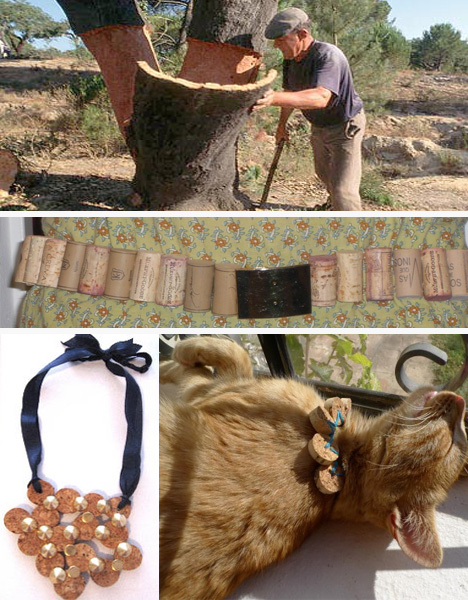Pour yourself a nice glass of wine and take a load off. There you go; everyone deserves a break every now and again. Oh, that variety you chose smells pretty nice, doesn’t it? I am sure it tastes good, too.
While you savor the deep, rich, grapey essence, I’m just going to take a few moments to share some fascinating informational tidbits about the cork that sealed your bottle. I know, I know. How interesting can a spongy beige cylinder really be? As it turns out, cork leads quite the international life of intrigue.
- Hailing from the elastic tree bark of Quercus suber oaks, well over half of the world’s sustainably harvested cork is obtained from Portugal’s forests, while the remainder comes from a combination of Spanish, Italian, French and North African sources.
- The outer cork bark of these unique trees is carefully stripped away with a machete and metal wedge once every 10 years for up 200 years without harming the integrity of the trunk or inner capillary system.
- The material is deemed to be incredibly eco-friendly because cork bark slowly but surely regenerates numerous times throughout the lifespan of each tree and the industry as a whole is deeply committed to a zero-waste policy.
- Cork’s eco-cred is even more notable given the fact that Portugal’s cork oak forests (known as “montados”) produce a significant volume of oxygen while also offsetting 4.8 million tons of carbon dioxide annually.
- 50% of all cork material harvested annually is transformed into alcoholic beverage stoppers (the equivalent of 13 billion wine corks circulated globally), while the remainder is converted into concrete, flooring, shoes, spacecraft heat shields, construction insulation, assorted types of sporting equipment, bulletin boards, fishing rods/floats/buoys and woodwind instruments, among many other items.
- There are two main types of wine corks harvested from high-quality Mediterranean stock: naturally cut (removed from solid strips of tree bark) and agglomerated corks (granulated raw cork that is mixed with glue and then molded into the traditional shape of a wine stopper), both of which are quality graded in as many seven separate categories.

Accent your neck and wrist
- Necklace options: Make a hand-stamped pendant, link several thin cork slices together, embroider disks with colorful floss or create a honeycomb-esque fashion statement. Like the look of wine cork in its entirety? Then showcase simple cylinders in elaborate gilded cages (like Phillips Frankel has done), decoupage them or gussy them up with recycled watch parts. Beloved house pets also appreciate recycled wine cork adornments!
- Bracelet options: Wine bottling industry remnants are transformed into designer Donna Piacenza’s chic wrist cuffs, but you can create a very different look by slicing corks lengthwise, burning them with a decorative etching tool, sandwiching a disc amid cord and beads or clustering multiple groups of thin cork pieces into a colorful display.
Take your hair into eco-extraordinary territory
- Kara Paslay fashions sliced cork pieces into original barrette configurations, but don’t stop there — bestow an old hair band with earthy appeal, either by hot gluing, sewing or wire wrapping thinly sliced discs around the entire piece.
Don’t ‘waist’ a drop
- This low-slung recycled wine cork belt will broadcast your affection for the grape in bold, unforgettable style.
Tie one on for a green affair to remember
- Nicholas Ruiz’s recycled wine and champagne cork bowtie makes humorous use of the crowning glory once sealing 11 assorted bottles.
Wear your planetary admiration on your feet
- While not exactly easy on the eyes, this very rustic and seriously practical shoe gets the job done!